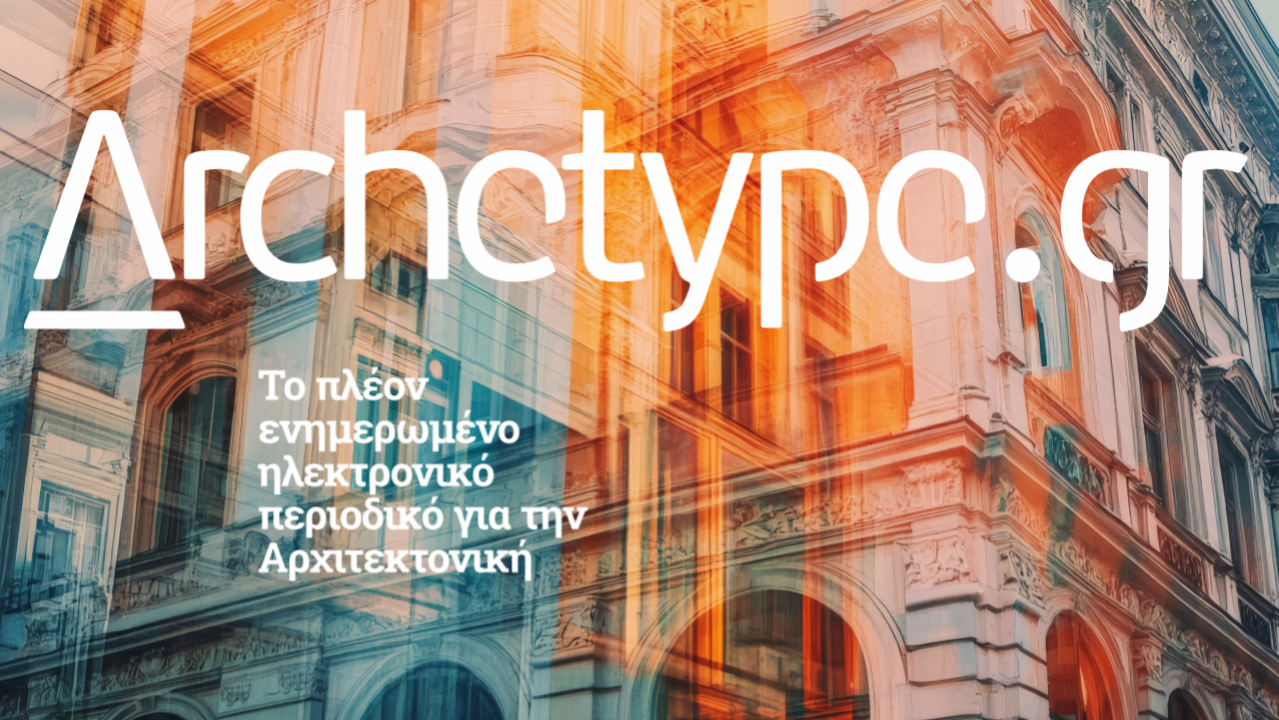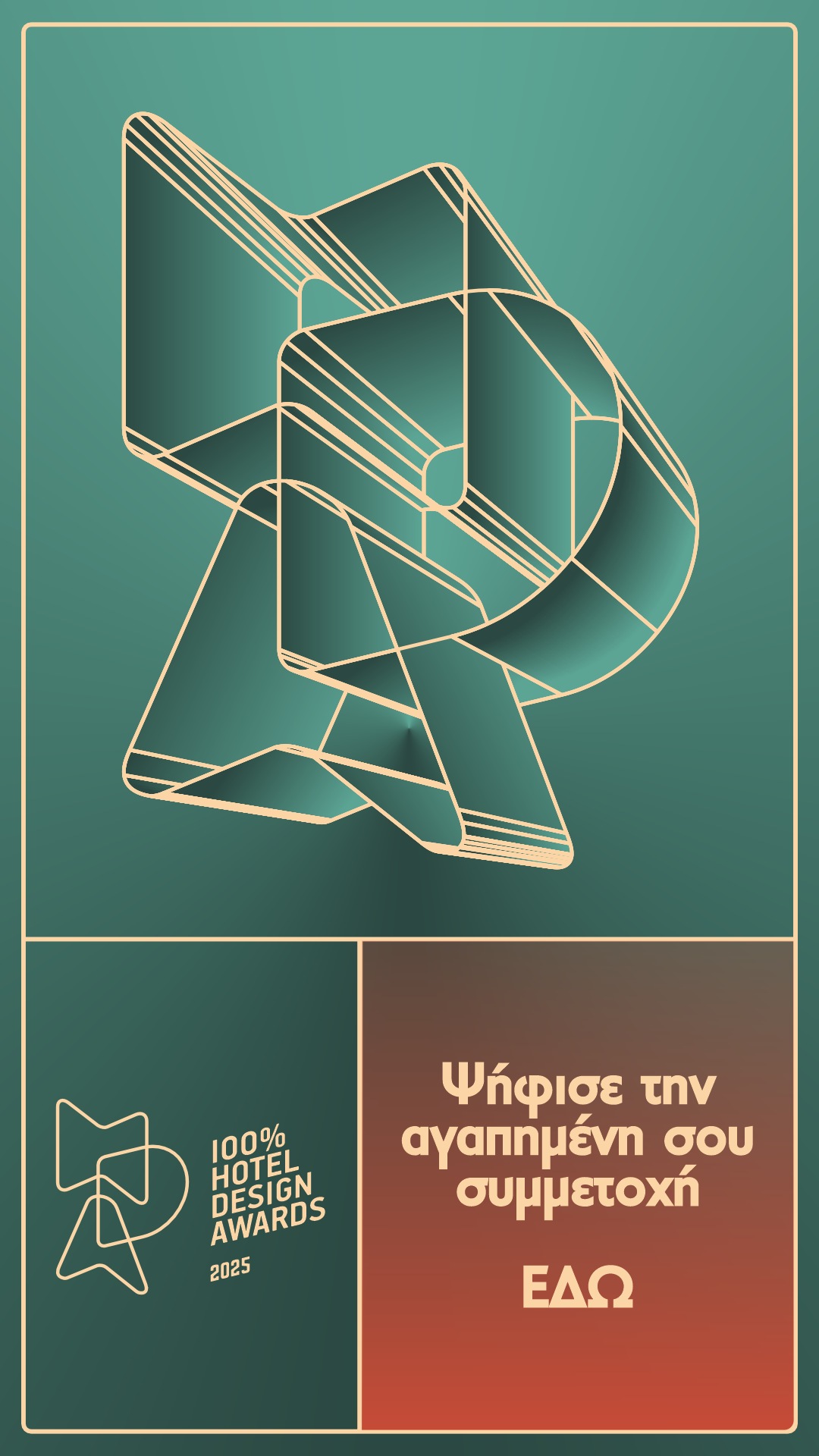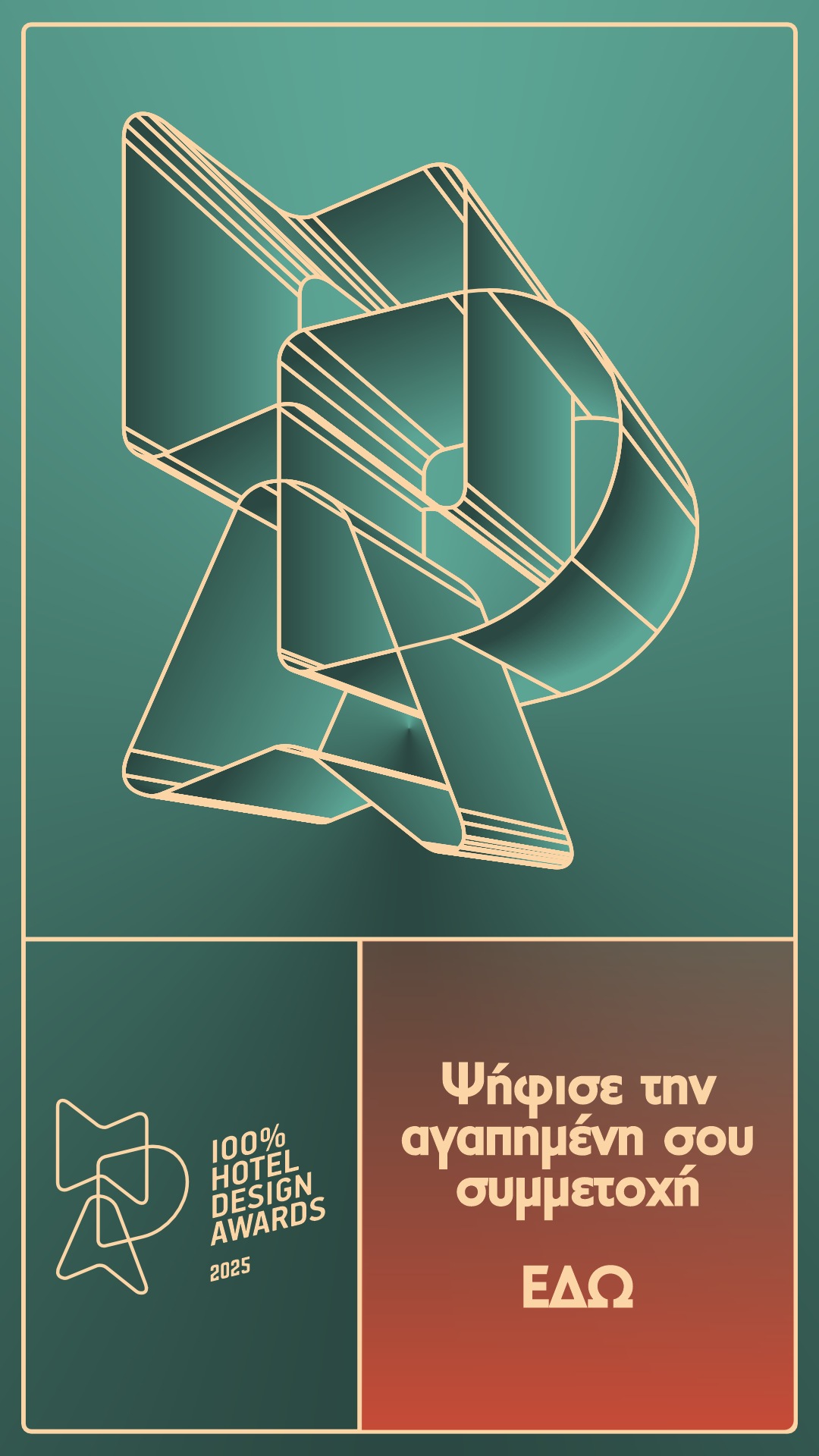
ΕΓΓΡΑΨΟΥ
για να λαμβάνεις τα νέα του Archetype στο email σου!
Thank you!
You have successfully joined our subscriber list.

The European Architectural History Network is delighted to announce that its next biannual meeting will take place at the NTUAthens School of Architecture, 19-23 June 2024.
Preliminary programme:
WEDNESDAY 19 JUNE
10.00-18.00 on-site registration
11.00-18.00 thematic interest group meetings
14.00-16.00 AH meeting
16.00-17.00 EAHN business meeting
18.00-18.30 conference opening
18.30-20.00 keynote lecture
20.00-22.00 opening reception
THURSDAY 20 JUNE
10.00-12.00 paper sessions
12.00-13.00 lunch
13.00-15.00 lunch tours / AH panel discussion
16.00-18.00 paper sessions
18.30-20.00 keynote lecture
FRIDAY 21 JUNE
10.00-12.00 paper sessions
12.00-13.00 lunch
13.00-15.00 lunch tours / ERC workshop
16.00-18.00 paper sessions
18.30-20.00 keynote lecture
20.00-22.00 gala dinner
SATURDAY 22 JUNE
10.00-12.00 paper sessions
12.00-13.00 lunch
14.00-16.00 book launches
16.00-16.30 summation
16.30-18.00 AH awards, next conference and the future
18.30-21.00 farewell drinks
SUNDAY 23 JUNE
09.00-18.00 post conference tours
_______________________________
Interest group meetings (Wednesday, 11.00-18.00):
Interest Group ‘Urban Representations’ (room A101)
Interest group ‘Building Word Image’ (room A106)
Interest group ‘Eastern Europe’ (room A002)
Interest group ‘Contemporary History’ (room A106)
Interest group ‘Architecture History and Digital Humanities’ with Interest group ‘Housing’ (joint event) (room A008)
Interest group ‘Postmodern’ with interest group ‘Environment’ (joint event) (room A104)
Interest group ‘Women and Gender’ (room A101)
_______________________________
SESSIONS AND ROUND TABLES TENTATIVE SCHEDULE
20 June morning (10.00-12.00)
Tourist imaginaries and architecture performativity in Mediterranean coast from a gender perspective (A106)
Youth and Architecture – Spaces and projects for/by an underrepresented group (A002)
Civic Centre Revisited: The Politics of an Urban Design Mirage (A101)
Provincialised Colonialities (A008)
The house types and the type of house: the colonial form for indigenous domesticity (A104)
Forging “Crossed Histories” of Twentieth-Century Architecture and Urban Design (K Hall)
20 June afternoon (16.00-18.00)
Architecture and Anthropocene Air (K Hall)
Wars outside and wars inside (A008)
Bureaucracy and Architecture in the Nineteenth Century in Europe and its Colonies: A New Paradigm? (A002)
Architectural Embodiments of Grain Sovereignty (A101)
On Buildings that No Longer Exist (A106)
21 June morning (10.00-12.00)
A veranda, a view and a motorway. Revisiting post-war touristic architectures in the Mediterranean (A002)
Architectural Histories after the Global Turn (A104)
Ecologies of Stone (A106)
Histories of Data Networks of Urban and Territorial Intelligence (K Hall)
Cultures of Maintenance: Upkeep and Repair (A101)
Architects societies and associations in the 19th and 20th centuries: centralisation and networks (A008)
21 June afternoon (16.00-18.00)
Architectural Historiography and its Moving Images: Cinema as an Agent of Historical Culture (A106)
Women Making Space in South America, c.1400-1900 (A101)
Data Narratives of Architectural Modernity (A008)
Machines for Settling: The Provisional Architectures of Colonialism (K Hall)
Urbanophobia (A002)
22 June morning (10.00-12.00)
Not so Pure: Modern Interior contaminations (A008)
Drawing the Ground (K Hall)
Histories of Architecture, Irony and Humour, 1750-present (A 106)
Toward a Genealogy of Care: Housekeeping and Homemaking (A002)
Democratisation and Architecture in the European South: A Comparative Approach (A101)
_____________________
Book launches (June 22, 14.00-16.00)
Toors
PRELIMINARY PROGRAMME
Lunch tours (Thursday, June 20 to Saturday, June 22, 13.00-15.00) on-site registration only (details will be posted)
Post conference tours (Sunday, June 23, 09.00-18.00): All tours cut through Greece’s strongly multi-layered history, including as much as possible exemplary monuments of antiquity, the byzantine, ottoman and modern periods.
* A registration platform will open soon
** Complimentary lunch will be offered in all Sunday tours.
a. Aegina Island (by boat and bus)
This tour around the island of Aegina, includes important monuments of antiquity, vernacular and 19th century civic architecture. The 500 BC Doric Temple of Aphaia is the most important monument on the island, a favorite of European travellers of the late 18th and 19th centuries. Large part of its impressively sculpted pediments is exhibited today at the Munich Glyptothek.
Rodakis’s house, an example of vernacular architecture elevated by its owner’ personal genius and labour, acquired mythical importance for a series of 20th century architects, including Pikionis and Kandylis. The newly restored house exemplifies the symbolic weight and heroic, cathartic mission with which vernacurlar architecture was invested by the pioneers of modern architecture.
Aegina served as the newly founded Greek state’s temporary capital, between 1827-1829. A series of neoclassical buildings constructed during the period that Ioannis Kapodistrias governed, testify to the making of a new state, one that claimed both antiquity and Western identity as core elements of its identity.
b. Hosios Loukas – Delphi – Aspra Spitia (by bus)
The tour includes one the most important Byzantine monuments in Greece, the monastery of Hosios Loukas, a complex which comprises of two churches (a 10th century church dedicated to Virgin Mary and an 11th century church dedicated to Hosios Loukas). Since 1990 the monument is a UNESCO World Heritage site.
At Delphi, another UNESCO World Heritage site, lies the pan-hellenic sanctuary of Apollo, a space which at its peak had great religious and political influence over the whole ancient Greek world.
Moving to the post-war era, the tour will conclude at Aspra Spitia (literally, ‘White Houses’), a settlement designed by Greek urban planner Constantinos A. Doxiadis in the 1960s for the workers of ‘Aluminium of Greece S.A.’. Two later expansions were supervised by architects M. Fotiadis, Ch. Lembesis and P. Massouridis.
c. Mycenae – Epidaurus – Nafplio (by bus)
The most famous site of mycenaean civilization (1600-1100 BC) and a UNESCO World Heritage Site, Mycenae features the Lions Gate, the Treasury of Atreus and other important monuments that captured the imagination of the ancient and modern world. Strongly connected to the Homeric epics, this archaeological site was excavated at an early stage among others by the controversial Heinrich Schliemann, who was obsessed with Homer.
In Epidaurus (UNESCO World Heritage site) the tour will include the Sanctuary of Asclepius (6th-1st century BC) and the ancient theatre (4th century BC).
Nafplio served as the seat of the provisional government of Greece during the war of independence and later the first official capital from 1829-1834. It is a heavily layered town, with fortifications and monuments dating from the Byzantine, Frankish, Venetian and Ottoman periods. The tour will comment on selected 19th century neoclassical buildings, as well as include Nafplio’s famous modernist XENIA hotel, inside the Akronauplia castle, designed in 1958 by Ioannis Triantafyllidis.
d. Sounio – Lavrio – Athens Riviera (by bus)
The Temple of Poseidon, together with the Parthenon and the Temple of Aphaia (see Aegina tour), are the most exemplary monuments of of classical Greek architecture in the region. On the way there, the tour will comment on the Athens Riviera and its post-war development. The tour will end in Lavrion, an area of mining in antiquity and the modern era. Its important industrial heritage is well demonstrated at the Lavrion Technological and Cultural Park, founded in 1992 at the facility of the old French Mining Company of Lavrion (Compagnie Française des Mines du Laurium).
e. Acropolis – Ancient Agora – Philopappos Hill – ‘Asyrmatos’ mass housing (walking tour)
The tour will start from the Acropolis of Athens and then descend to the Ancient Agora. It will then proceed up Philopappos Hill, along the route designed by Dimitris Pikionis, and stop at the Philopappos monument (2nd century CE). It will end at the neighbourhood of Petralona, to discuss two post-war mass housing projects which addressed 1922 refugees and internal migrants still living in slums on the hill.
f. Classicisms and Archaeologies – Athens historical centre (walking tour)
Our current understanding of the ancient monuments of Athens is largely conditioned by their ‘discovery’ by Western antiquarians in the 18th century, and by their institutionalisation after 1830 in the context Greek state-led archaeology. These monuments, however, had been used in many different ways, and assigned different meanings by local populations over the years: fragments of classical temples were incorporated in byzantine churches or vernacular houses, either as simple building materials or as means of magical protection. Ancient ruins were places of worship and philosophical contemplation for local Christians and Muslims alike.
This tour will visit a series of locations in the centre of Athens that demonstrate different uses –symbolic and material appropriations– of the city’s classical past: from the Neoclassical Trilogy of Theophil Hansen and the spolia-filled Byzantine church of Gorgoepikoos, to the vernacular settlement of Anafiotika under the Acropolis.
More information here.
***
Why Athens?
REDEFINING THE CANON
From Pausanias to Evliya Çelebi, and from the Grand Tourists of the 18th and 19th century to the gathering of some of the most renowned modern architects as delegates of the 4th CIAM in 1933, numerous important architects, artists, and other intellectuals have visited Athens for different purposes: to see, measure and admire its ancient monuments, to reformulate the relationship between antiquity and modernity, or even to project modernity onto local vernaculars. Many more (such as Winckelmann) never visited the city, but used the idea of classical Athens in order to change the way we see art and architecture. Throughout the centuries Athens has offered the incentive both to establish and to subvert the canon of architecture and its history. And it continues to do so: over the last few years, the study of its Ottoman history and its indigenous archaeologies have gained momentum among architectural historians. At the same time, the profusion of the anonymous DomIno-like “polykatoikia” (apartment building), in the city that lent its name to the famous “Athens Charter”, attracts researchers and student groups from all over Europe and beyond.
Emerging from a decade of financial, humanitarian and environmental crises, Athens is now more relevant than ever: while a number of ambitious masterplans promise to revitalize the city center and coastal front attracting potential investors and foreign residents, other initiatives try to counter uncontrolled development pointing to questions of sustainability, affordability, participation and community building. Meanwhile, the city’s past is under constant renegotiation: 2021 marked the bicentennial of the Greek Revolution and the subsequent foundation of the modern Greek nation-state. 2022 marked the centennial of the end of the Greco-Turkish War and the massive Population Exchange (involving Christian and Muslim populations) sanctioned by the Treaty of Lausanne (1923). Both events were fundamental for the political, demographic, cultural and architectural evolution of Athens; the current timing calls for a revision of past historiographies, and a reappreciation of the complexity of the Athenian context, from the Ottoman entanglements of ancient sites, to modern housing projects prompted by the arrival of refugees from Asia Minor.
Debated restoration programs of the city’s antiquities, publications that explore the city’s Medieval, Ottoman, inter- and post-war past, campaigns for the protection of its modern monuments (docomomo Greece, TICCIH Greece, Monumenta etc.), initiatives concerning the gender dimension of local architecture and collective acts for the ‘decolonization’ of monuments are just some of the many initiatives that unearth the city’s different pasts, histories and architectures. We believe that Athens is an ideal location for EAHN 2024 and we invite our colleagues to develop new perspectives on the multiple historical and architectural layers of the city.
The longue durée of Athens: between history and utopia
Spreading and breathing daily under the shadow of the Acropolis, the capital of Greece owes much of its current size and administrative status to the lure of its past. Despite the classical grandeur of the monuments that continuously interrupt its modern urban fabric, Athens did not always retain a central role in the life of the country. During the Byzantine and Ottoman eras, Athens grew smaller both in demographics and political importance, while its classical ruins were being dilapidated, looted, or repurposed as spolia for the construction of vernacular habitations, churches and mosques. Much like Petrarch’s Rome, however, Athens was carried through the centuries of its occupation as a utopian literary topos, only to ‘rise again’ in the wake of the Greek Revolution as the permanent capital of the liberated nation-state. Re-discovered in the 18th century by architects, such as James Stuart, Nicholas Revett and Julien-David Le Roy, who set off to read on the form of its surviving monuments the rules of the art, and rebuilt from 1834 onwards on the basis of these same rules, modern Athens rose on the literal and metaphorical foundations of its classical past. Almost two hundred years later, the archaeological attraction of the city merges with the layers of a roaring metropolis.
With a history spanning more than two millennia, contemporary Athens is an amalgam of multiple architectural histories that offer fruitful ground for reflection and study to architectural historians of all eras and areas of expertise. From its classical, Byzantine, Medieval and Ottoman heritage, all the way to its reconstruction in the nineteenth century, and from its rapid expansion in the twentieth century to its current metropolitan status, the city comprises a complex stratigraphy where layers of history overlap, coexist, or compete for attention and cultural signification. Receiving successive waves of migration in the 20th century, the city expanded and incorporated surrounding villages and towns, being currently home to one third of Greece’s population. A contact zone (and often a battle-ground) between East and West, between the Balkans and the Mediterranean, Athens has been the meeting point and melting pot of different cultures and architecture, the place of discovery, reinvention and fantasy for numerous travelers; at times ideal, but very often surprisingly real.
Today Athens is still being built, designed and re-shaped through projects that envision the future and often conflict with its different pasts: such projects include Renzo Piano’s new Cultural Center in Faliron, and Norman Foster’s plans for the former airport of Hellenikon, as well as lesser known, but historically pertinent projects, as the recent conversion of the former Doxiadis Associates headquarters into a luxury condominium, the transformation of architect Takis Zenetos’ FIX factory into a museum of contemporary art, the completion of Ioannis Despotopoulos’ Athens Conservatory, and the re-opening of the National Gallery following years of an eventful expansion and restoration work. From their mere material substance, to their architectural form and public rhetoric, such new projects claim and use different aspects of the city’s past and envision different futures.


Χριστίνα Ιωακειμίδου - 15/10/2025
Archetype team - 13/10/2025
Archetype team - 13/10/2025
 ΟΛΑ ΤΑ ΤΕΥΧΗ
SUBSCRIBE
ΟΛΑ ΤΑ ΤΕΥΧΗ
SUBSCRIBE
Μπορείς να καταχωρήσεις το έργο σου με έναν από τους τρεις παρακάτω τρόπους: